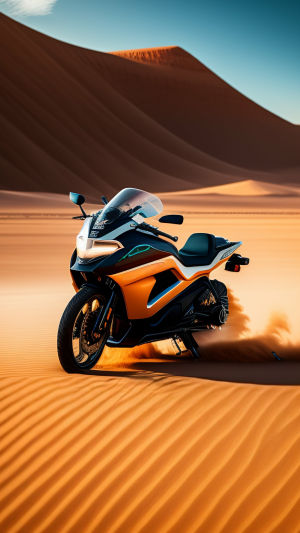Motorcyclists live by the adage: "Dress for the slide, not the ride." This means that, regardless of weather conditions, every rider should be equipped with a full array of motorcycle gear to maximize protection during a collision.
Emphasizing safety over the fleeting sensations of wind and freedom underscores the importance of preserving life.
Riding a motorcycle is a physically demanding endeavor, far removed from the superficial comfort it might exude. Riding decked out in full gear may look undeniably cool when embarking on motorcycle journeys. Still, the discomfort associated with their ensemble is a unique understanding reserved solely for the riders themselves.
Particularly when facing extreme weather conditions such as scorching heat, rain, or humidity, it is not uncommon to witness riders sporting nothing more than a helmet, and in many cases, even opting for a half helmet, as they zoom down the road, raising concerns for their safety.
1. Upper Body Protection: Riders can choose from various protective gear for the upper body, including one-piece leather suits, separate jackets and pants, or armored jackets. Among these, the one-piece leather suit epitomizes style and comprehensive protection.
It incorporates back armor, chest protection, elbow guards, knee sliders, hip padding, shoulder protection, and even a hump for aerodynamics. Beyond protection, these suits offer wind resistance, warmth, and an aesthetically pleasing fit, making them a coveted piece for every motorcycle enthusiast.
2. Helmet Selection: The motorcycle helmet is the linchpin of riding gear. It is an indispensable item for any rider, irrespective of the type of bike or speed. Choosing the fitting motorcycle helmet involves considering factors such as the type of protection it provides during collisions, resistance to wind, and the ability to shield against road debris.
While full-face helmets offer optimal protection for the face, a modular helmet, with its flip-up front, strikes a balance between a three-quarter and full-face design. Finding a helmet that fits snugly without being overly tight is crucial, considering head circumference and shape.
3. Protective Gloves: Motorcycle gloves are pivotal in keeping hands comfortable, functional, and shielded. They come in various weights and thickness grades, catering to different seasons and riding conditions.
Full-finger gloves protect against blisters, wind, and cold; in the event of a fall, they mitigate the risk of abrasions and hand injuries. The right fit is essential for maintaining control over the bike, balancing snugness, and allowing proper blood circulation.
In the course of motorcycle journeys, adherence to certain practices is crucial:
1. Cargo Loading: When transporting items on a motorcycle, it's imperative to comply with height and width regulations. The loaded cargo should not exceed a height of 1.5 meters from the ground, and the length should not surpass 0.2 meters beyond the bike's body. For two-wheeled motorcycles, the width of loaded items on both sides should not exceed 0.15 meters from the handlebars. In the case of three-wheeled motorcycles, the width of packed items should not surpass the vehicle's body.
2. Speed Limits and Traffic Etiquette: Observing speed limits indicated by signs and road markings is crucial for safe motorcycle riding. On highways, the speed limit for motorcycles is typically set at 80 kilometers per hour. Avoid weaving in and out of traffic, crossing lines arbitrarily, or riding against traffic flow. Violating road markings and engaging in such prohibited behaviors can have severe consequences.
3. Caution around Turning Large Vehicles: Special attention is needed when navigating around large vehicles making turns. These vehicles exhibit an "inner wheel discrepancy" during turns, creating a visual blind spot for the driver. Riding too close or entering this blind spot while a large vehicle turns can pose significant dangers.
Life is short, but on the path to dreams, keep riding. Motorcycle enthusiasts are forever young.





